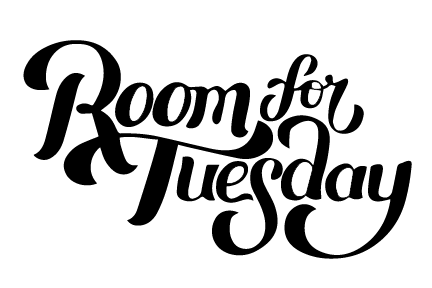How to Make A Physical Interior Design Mood Board
I’ve been in design mode lately, while we’ve been planning & ordering items for our basement renovation. I thought it would be fun to show you how my mood board is looking. Mood boards are key in interior design because the actual (physical) samples and swatches give you the best look at color, texture, and provide a tactile experience with how the elements in a room work together. Read on to learn how to make an interior design mood board… I’m walking you through my design process!
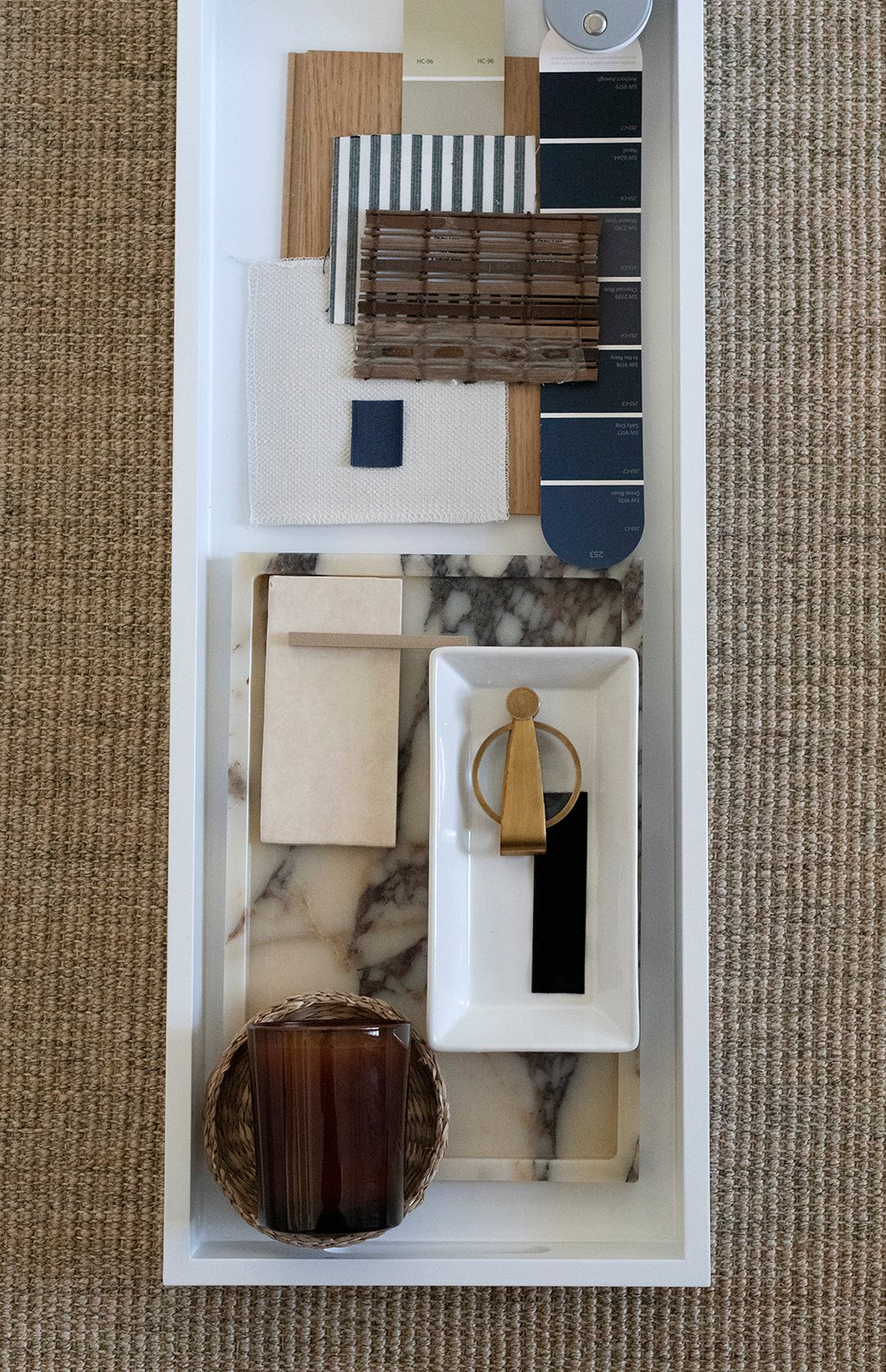
I’ve talked about making moodboards & conceptualizing a room here on the blog before, and I’ve also shared how to create a digital design plan moodboard in Photoshop, but I’ve never actually shared my process for physical interior mood boards. Truth is, it’s key for pulling a room together (especially from the ground up) and it gives you confidence to make the more expensive home purchases.
Mood boards are a visual collection of the design swatches, finishes, and textiles you’re considering for a room. They can range from simple to complex, and they often work alongside or complement digital mood boards in designing a space. Back when I was designing for clients full-time, every client project had an associated mood board basket that was constantly evolving. It’s just easier for clients to visualize when they have tangible room elements in front of them, and it’s easier for the designer to nail down the look.
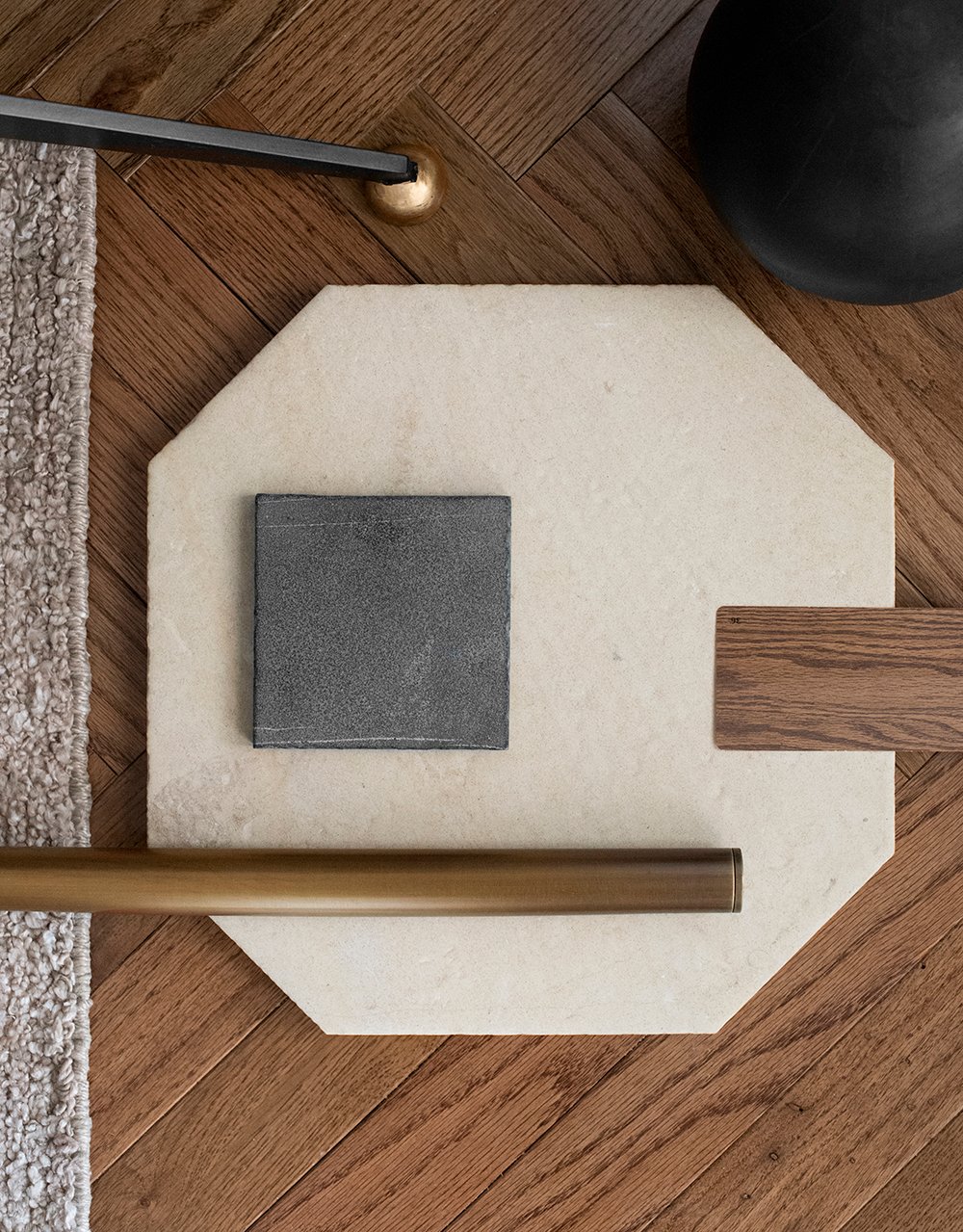
Gather Inspiration
This part of the process always feels exciting to me, with a world of endless possibilities. You know I love to scroll Pinterest, peruse interior magazines, and scour design books for inspiration. Once I have a clear concept for the direction I want to head with a room, I can begin to choose which items best fit my vision, budget, and aesthetic. This is when I begin to hone it in, curate, and dive into the design process…
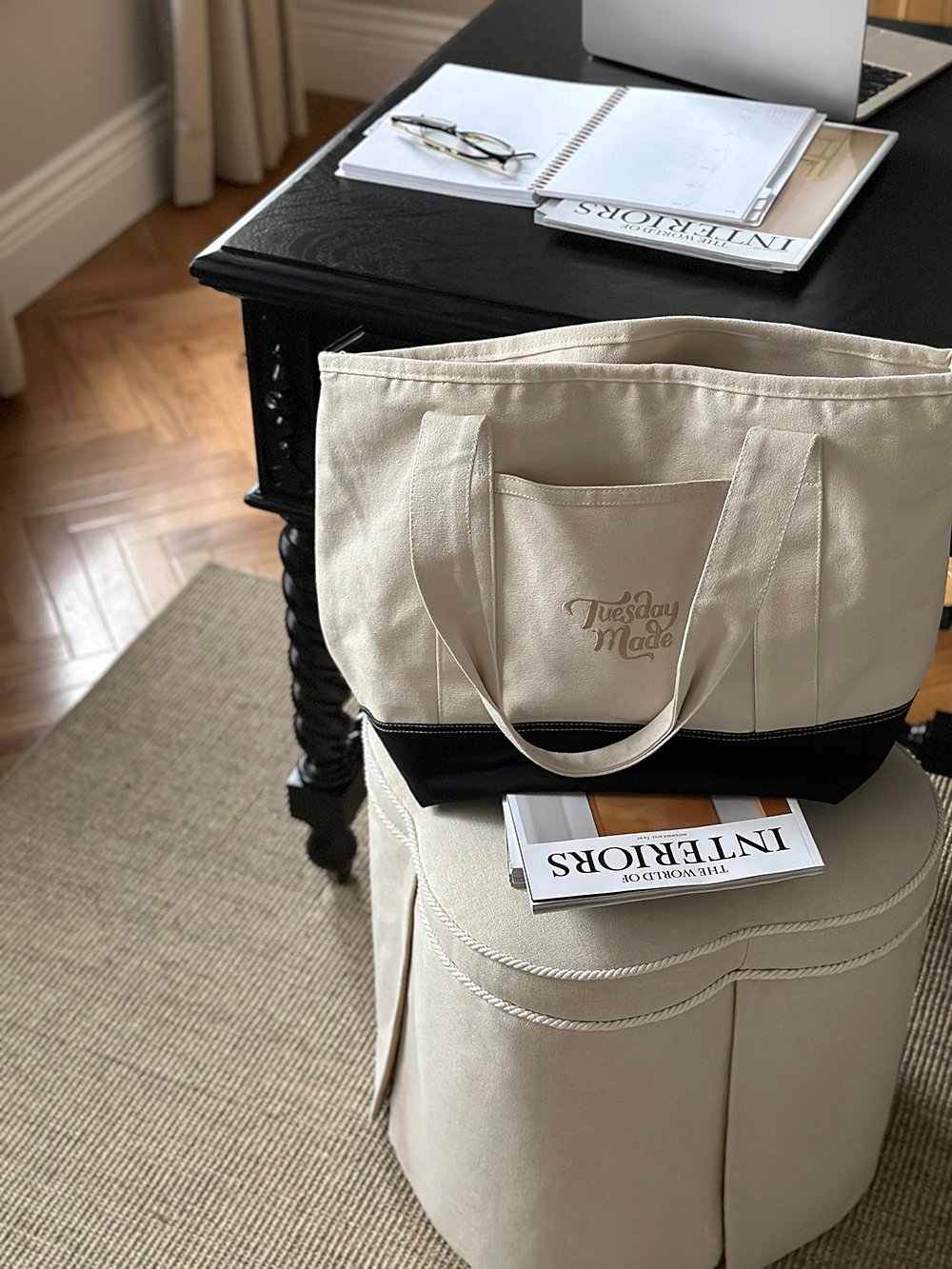
Digital vs Physical Moodboards… Which Comes First?
Where to start? This totally depends on your personal preference and process, as I believe they’re interchangeable… but for me- I always begin with the digital mood or concept board and floor planning first, as a loose outline. Once I have a basic plan or wireframe in place, I can easily make substitutions (sofa style, fabric, etc)… and that’s where the physical mood or sample board comes into play.
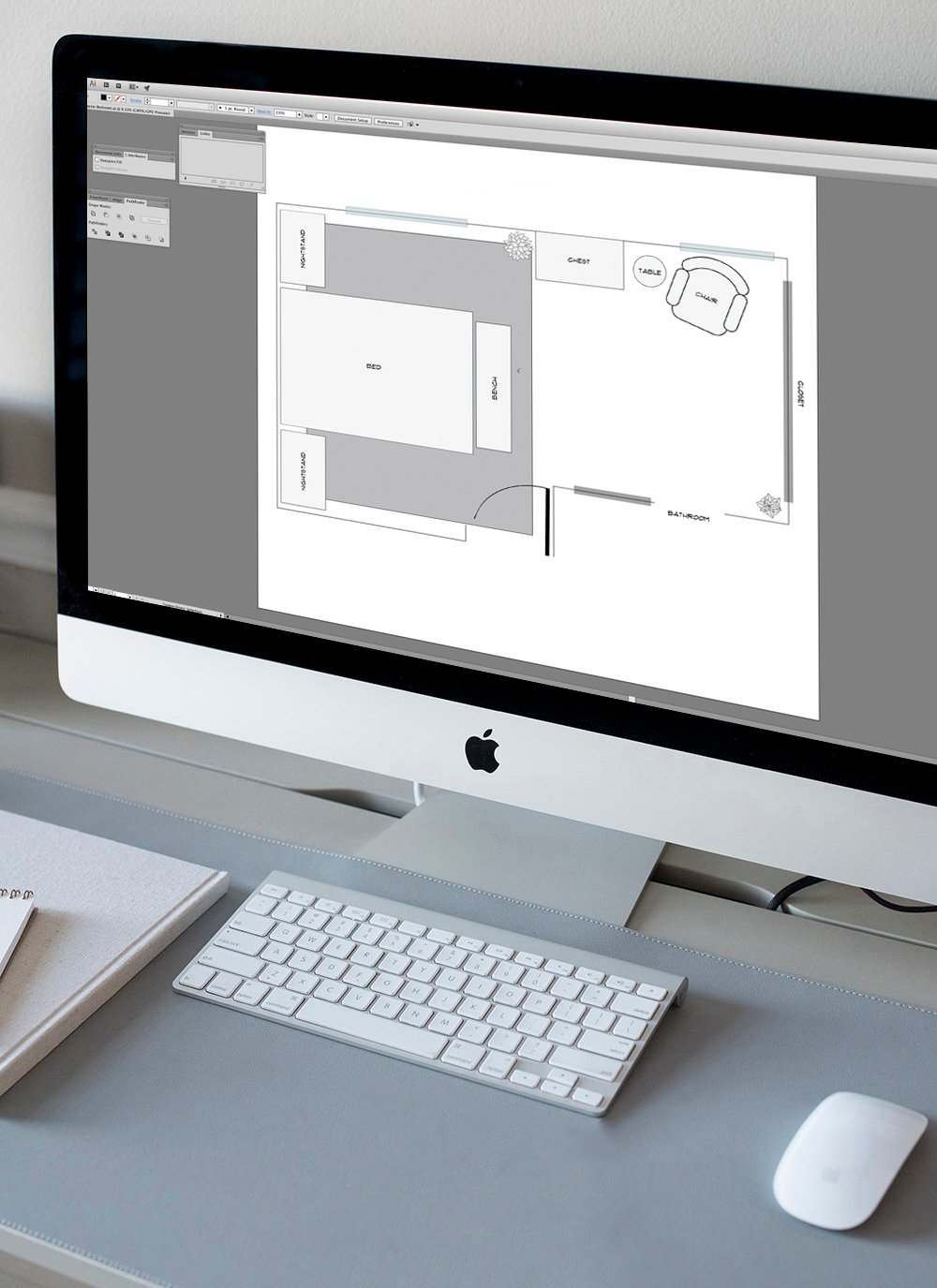
Pick a Neutral Base
Before you start layering a physical mood board, choose a neutral base for your swatches. By that, I don’t mean paint color… I mean the actual board. I prefer a plain white tray to corral everything without altering or adding a unique color or texture to my design plan. Check out the tray I use below- I have these in a couple different sizes. When I worked for a design firm, we used neutral baskets to contain swatches for each client project. Physical mood boards can take different forms and are unique to what works best for you.
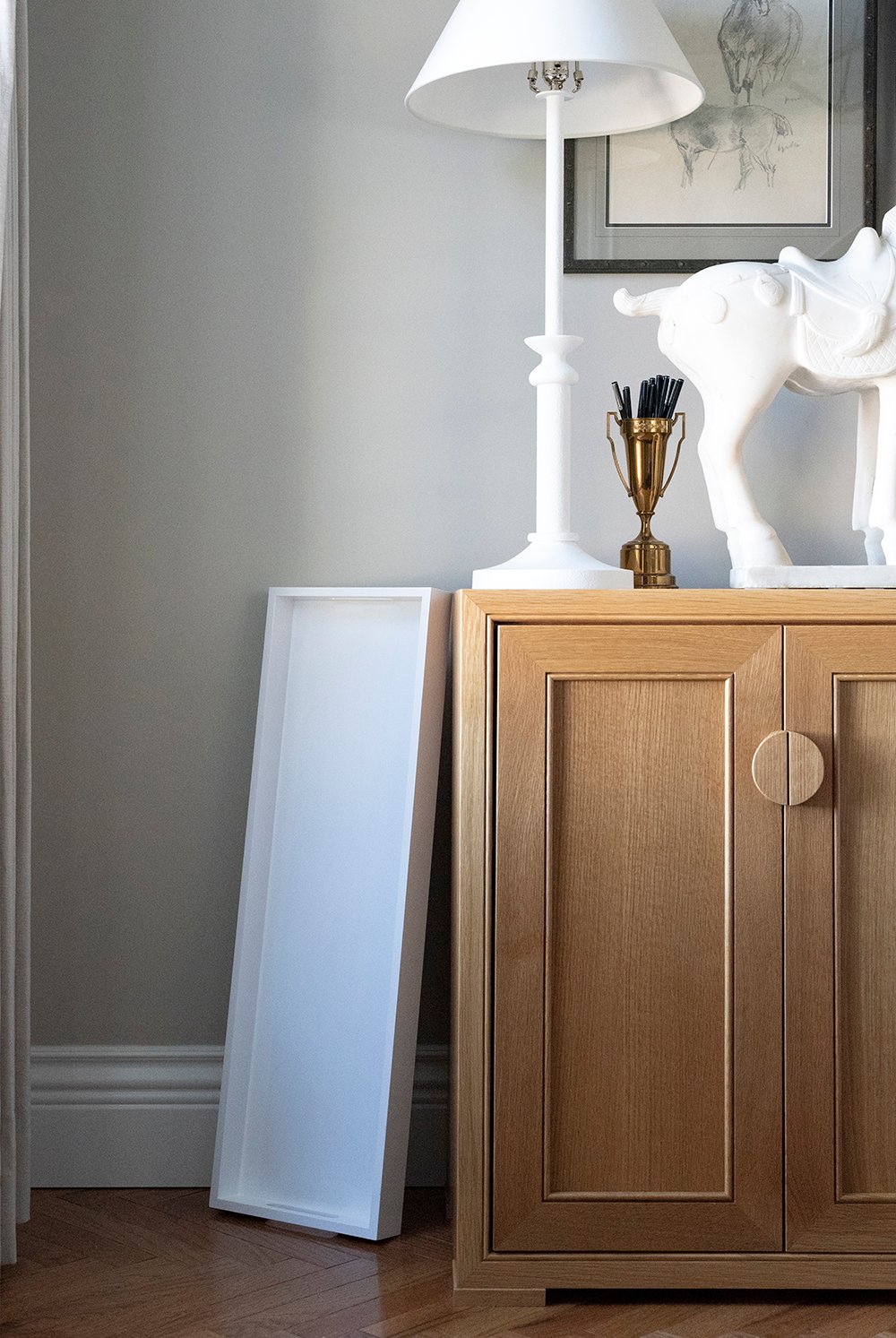
Often times, I’ll have multiple mood boards scheming simultaneously, so I use the same style tray for each room. For example, I’m currently working on our basement and entryway, each room has a physical mood board that evolves until the room is completed. These exist until the project is completed- I just tuck them into my home office credenza, out of the way. Some mood boards stay the same from design to completion, while others go through many iterations.
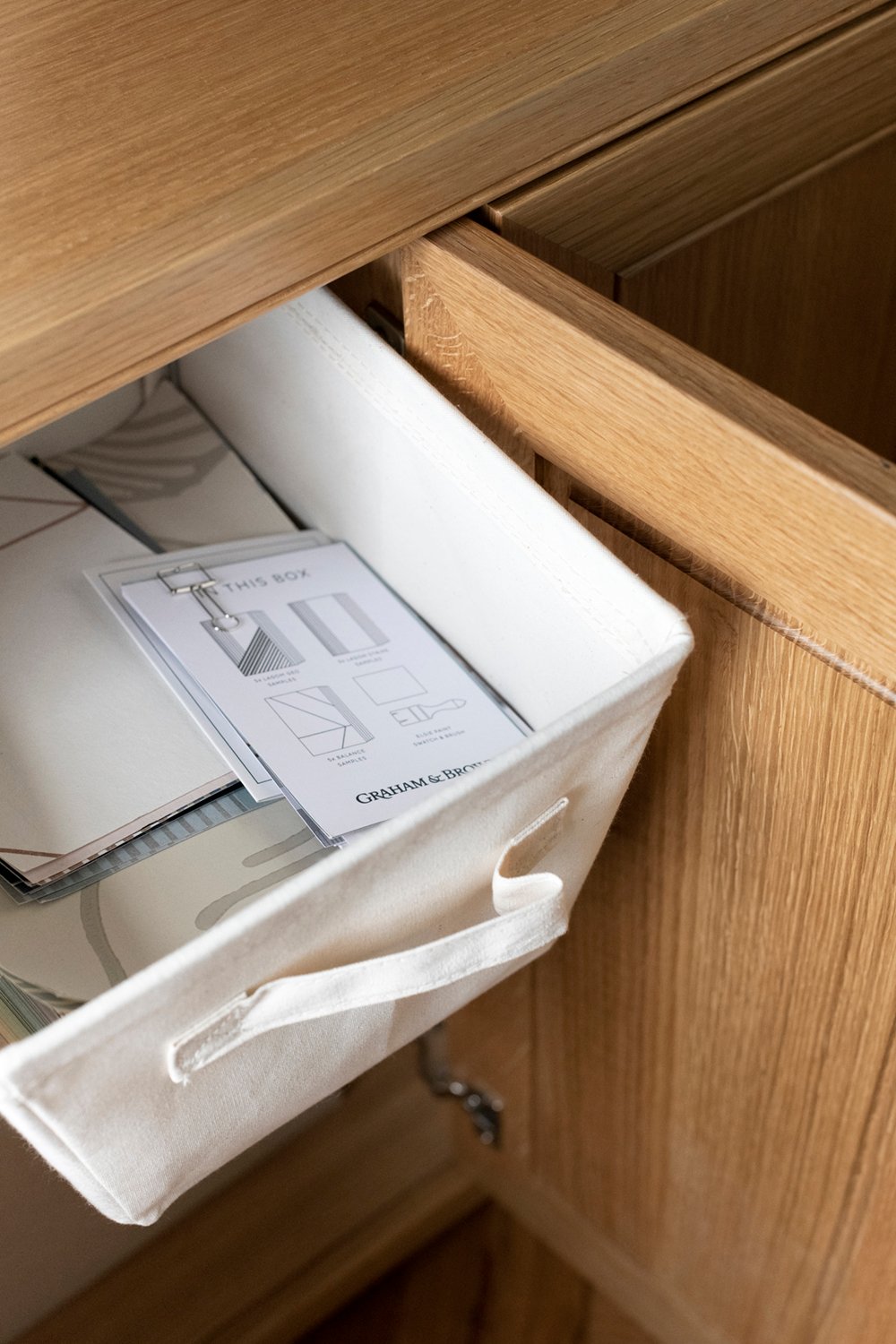
Collect Samples & Swatches
What kind of samples & swatches should be included in a physical mood board? Anything that’s relevant for the space, really. Here are some ideas…
- Paint, stain, and wallpaper swatches
- Metals & finishes for lighting, appliances, hardware, etc
- Stone samples
- Flooring or wood samples
- Fabric swatches for upholstery
- Window treatment swatches
- Rug or carpet samples
- Millwork samples
- Hardware samples
- Decor and furnishings (samples, color, or printout)
This was the beginnings of my kitchen mood board…
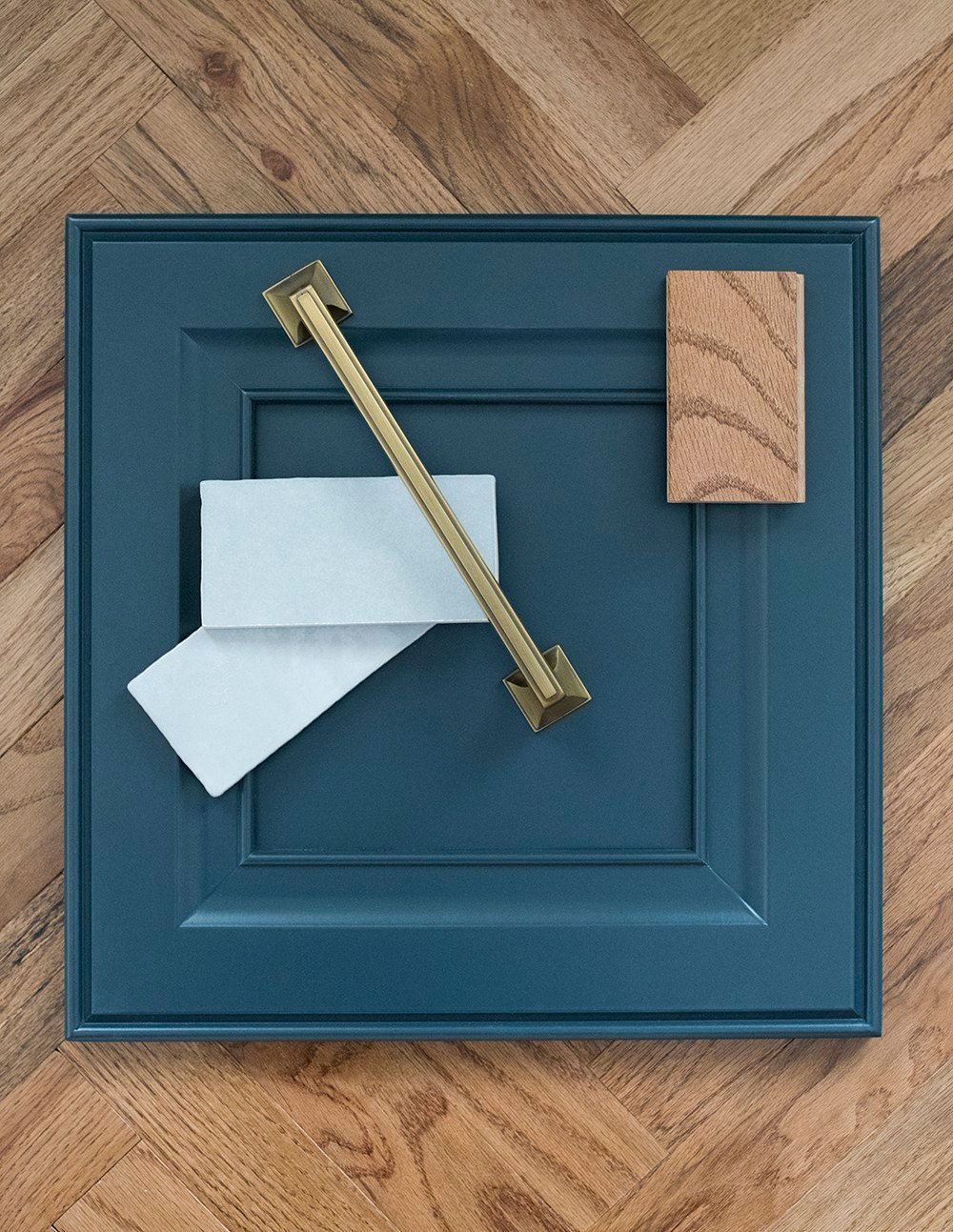
How to Obtain Swatches
How does one obtain swatches? For interior designers, most trade accounts include free samples, swatches, or you have a design library at your disposal. For anyone outside the trade, luckily- you can also easily acquire swatches. Most are free or are inexpensive (like paint and fabric swatches). Even if it cost a bit, I’d always recommend ordering swatches prior to committing. If you’re working with an interior designer, they’ll provide samples and do the work for you.
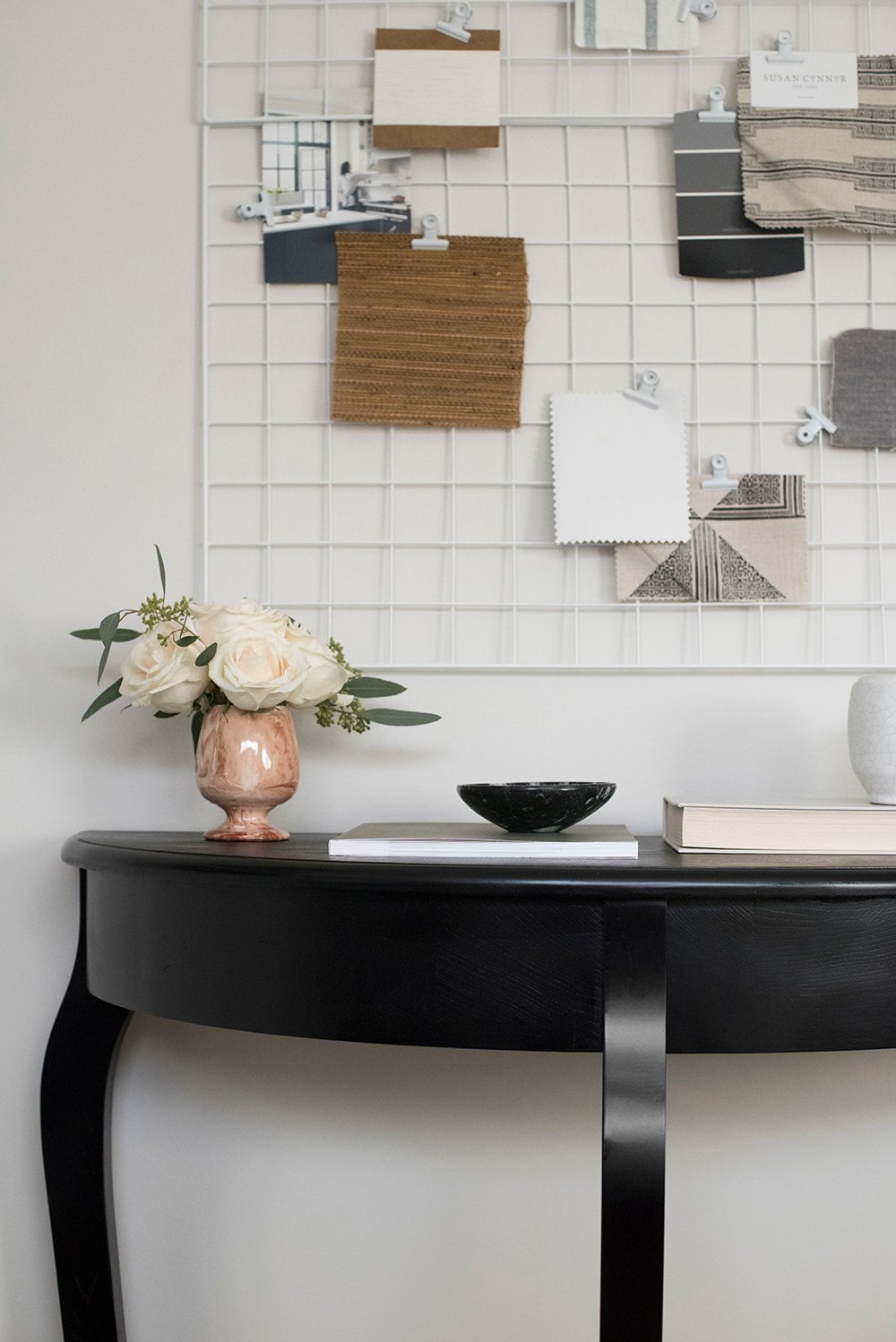
Layer Your Samples
The goal of a physical mood board is to see how the different elements, textures, colors, and finishes within a room work alongside each other. I like to layer them with the larger “base” elements of a space on bottom (like flooring), with the smaller decor type swatches on top (like hardware or fabric swatches). There really aren’t rules for styling a mood board… seeing all the unique swatches together should be enough to get a good understanding of how they work together- no matter how they’re arranged or layered.
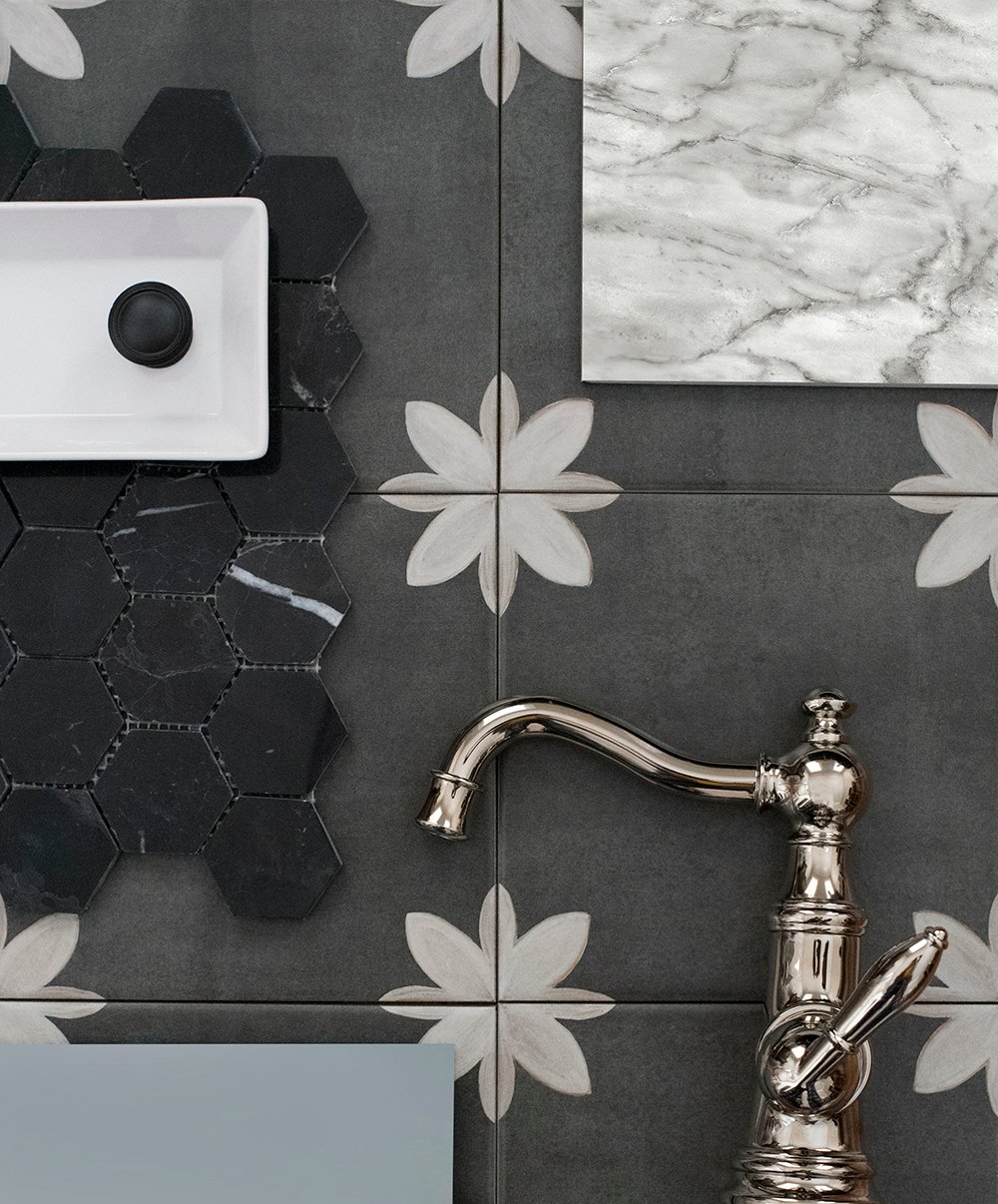
Audit and Adjust Your Board
This part of the process is key. Once I see the physical components of a room together, I immediately know which items do or do not belong. What feels out of place and what could you adjust to improve the overall aesthetic? Does something stand out? Are you missing anything? Could this room benefit from an added color, texture, or pattern? You can also experiment by pulling other small items from your home, adding and subtracting to see what plays nicely together.
Items to Include for a Timeless Look
A few elements I always include for a timeless look?
- At least two classic metals (polished nickel, brass, bronze, etc)
- Natural fabrics (linen, cotton, wool, etc)
- A natural woven element (baskets, woven shades, jute rug, etc)
- Something with a glossy or reflective finish (semi or high gloss paint, a mirror, glass, etc)
- Classic stone (marble, limestone, soapstone, neutral ceramic, etc)
- A warm wood element (furniture, decor, building material- like flooring, etc)
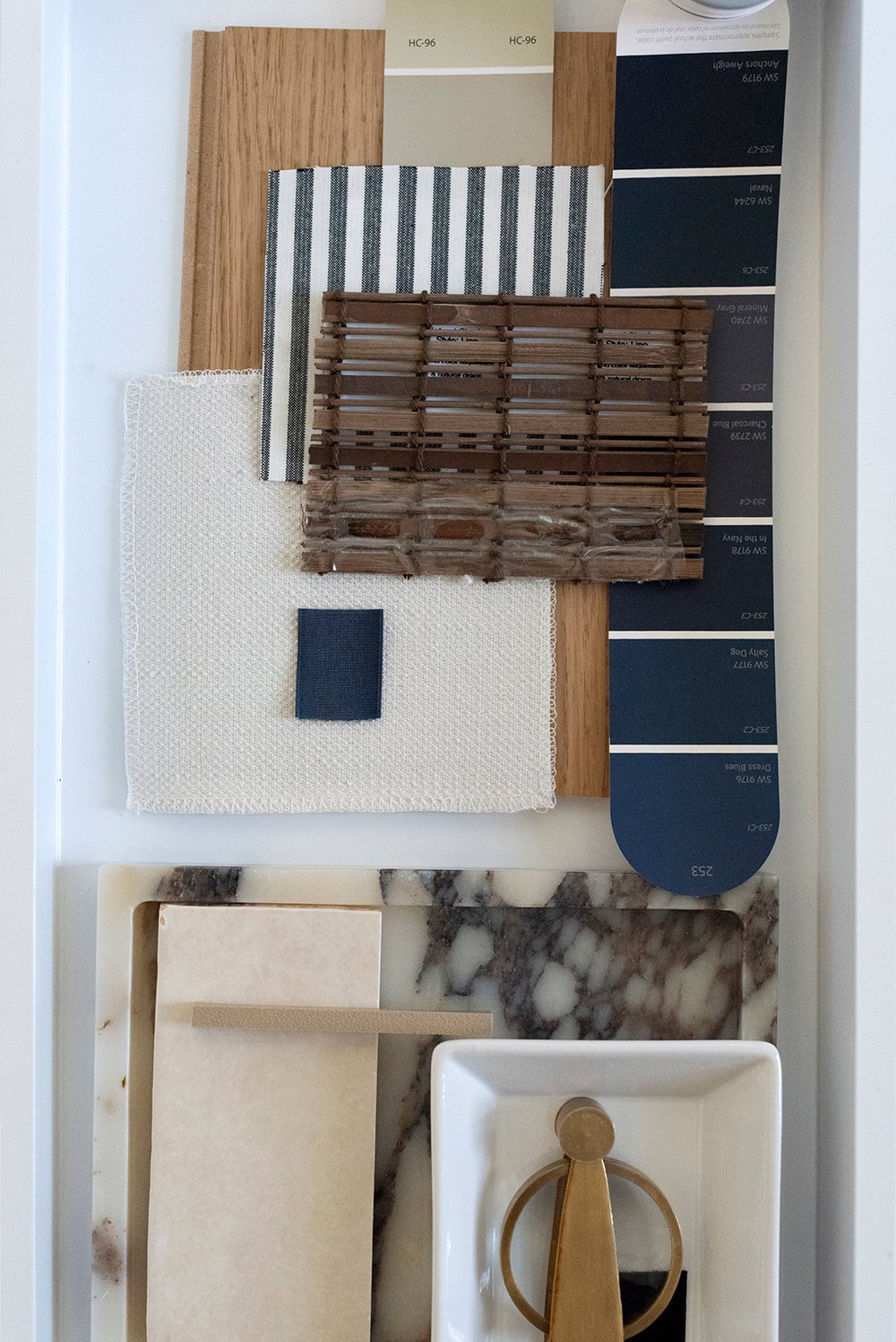
Capture of Your Mood Board
Something I got into the habit of doing when I was designing for clients was taking a photo of the finished mood board. I quickly learned this was helpful not only for filing and keeping track of samples, but for analyzing the room in 2-D. It can help you identify something you’ve missed or overlooked. I also like to pop the image of my physical mood board into my digital mood board file to see how they compare and overlap. It can also be helpful for fine tuning colors on the screen.
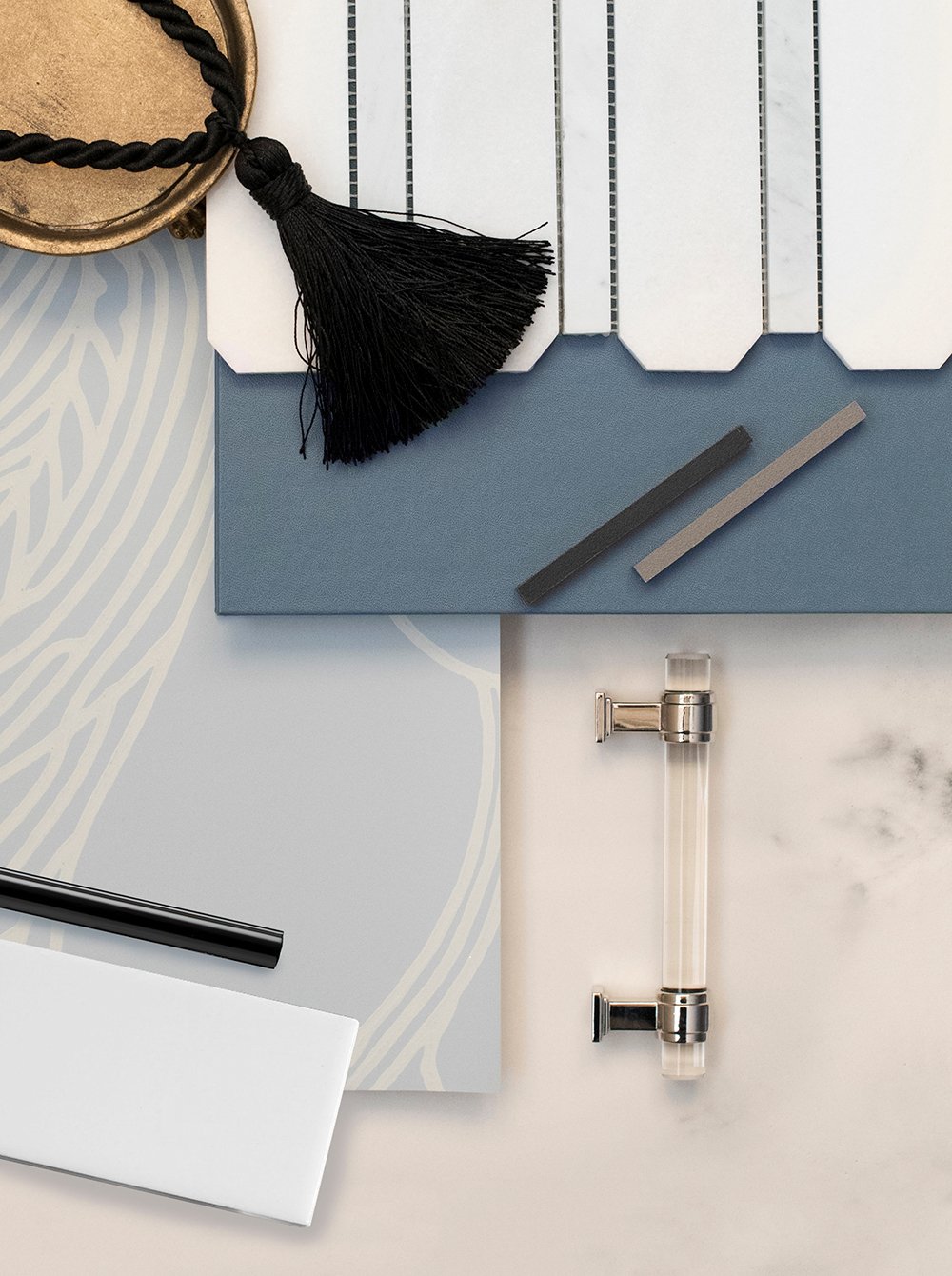
Begin Ordering (with Confidence)
Once you’ve nailed down a mood board you feel happy with, you can begin ordering your components with confidence. I always feel more sure when ordering something for our home, when I’ve seen a small swatch beforehand. It gives me the control and confidence I need to commit, and it ensures there won’t be any surprises on the day of delivery. Once the design plan has been locked in and items have been ordered, then the difficult part of the room begins… manual labor and the renovation itself.
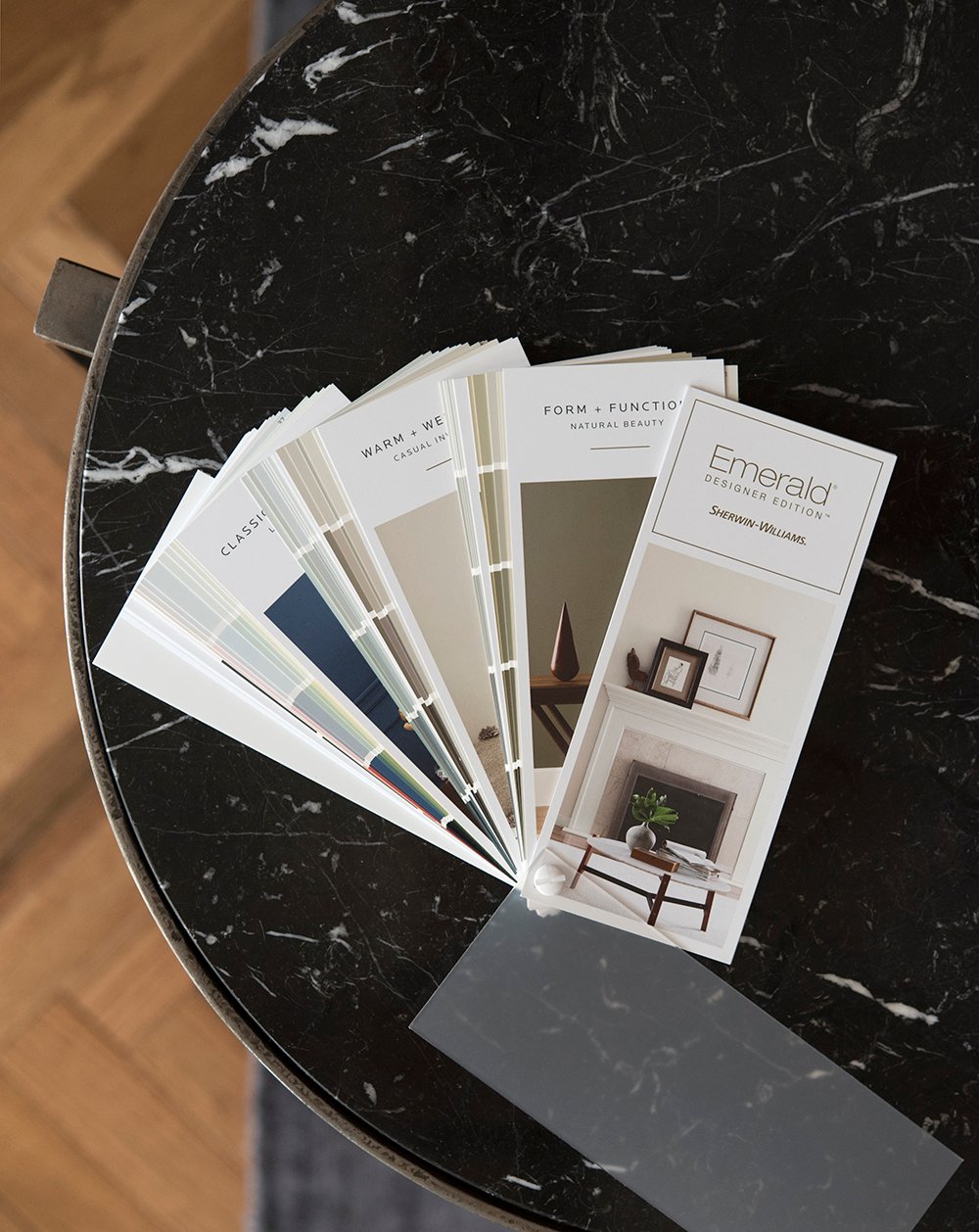
FAQ
These are widely available to the trade (designers, builders, architects, etc), but anyone can buy one, if you’d like. The pricing is different outside the trade, but here’s a tip… find past editions on eBay or Amazon for tens of dollars, instead of hundreds of dollars.
Great question! Find something that matches and represents your vintage item… example- if you have a vintage wool tapestry, find the same color wool swatch to include in your mood board. Alternatively, you can also print a photo of the vintage item to physically include in the board.
Definitely! There is no size limit. Some of my mood boards just have a few big items… flooring, cabinetry, hardware / plumbing finishes, paint, and that’s it. It totally depends on your project and what’s most helpful to see mapped out.
This is situational. Some of my mood boards are ever evolving til the very end of a project. Something is out of stock or I have to make a decision on the fly and end up tweaking it. Other times it remains the exact same right up to completion.
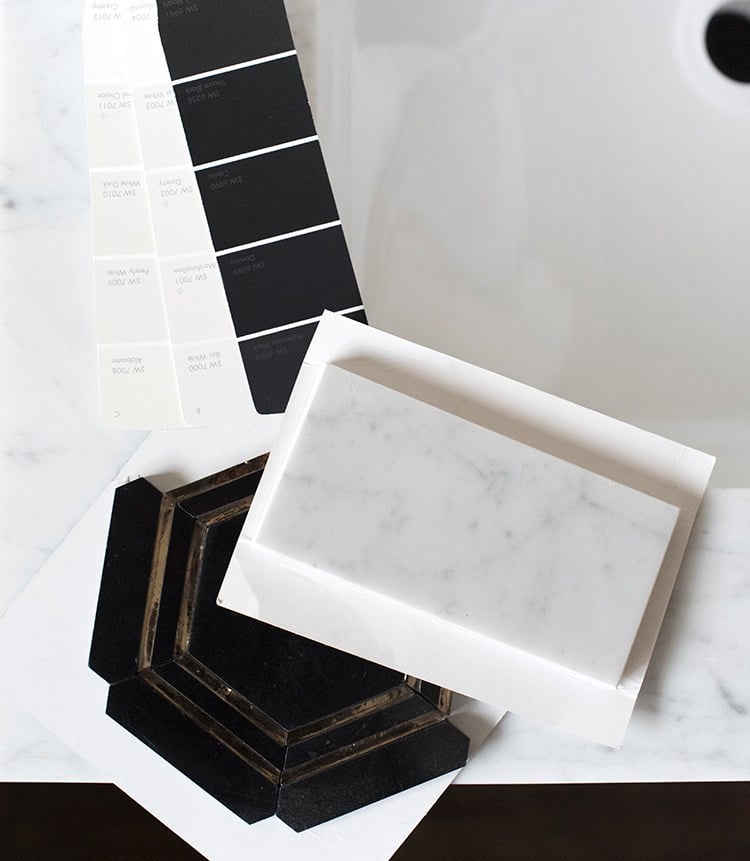
I hope this post was helpful if you have some big design decisions to make or have a renovation in the works. Let me know if you have any questions or thoughts in the comment section below. Here’s to a great week ahead! I got quite a bit of flooring installed over the weekend and the basement renovation is coming right along. I can’t wait to share more of it with you!
